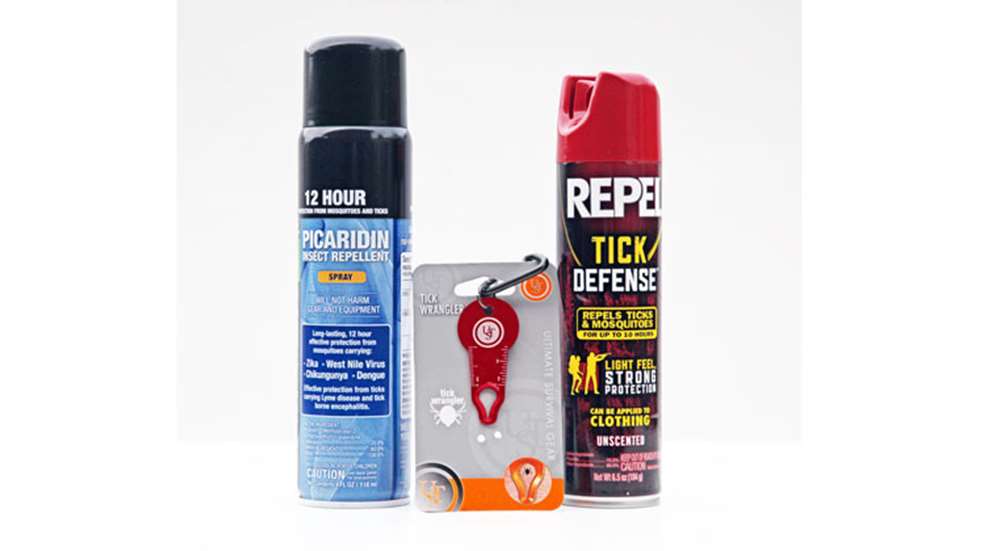
In our first installment of this series on Lyme, we established that ticks can be active even in "non-peak" times and suburban areas. Sadly, the situation is further complicated by the fact that Lyme can be tough to diagnose correctly: the symptoms mimic and overlap with other disorders. That said, as of 2019, it is the most common insect-borne infection in the United States...and it can be quite dangerous to your health. Here's how to protect yourself...deep in the backcountry, or just in your back yard.
- Use a tick repellent. Just be careful what you purchase and read the label since some repellents are not to be used on the skin, clothing only.
- When possible, wear light-colored clothing so to better be able to spot a small tick. (Naturally, most turkey hunters won't have this luxury.)
- Consider using duct tape or tick gaiters to seal the opening between the top of your boot and pant legs so to eliminate an easy entrance to your skin.
- Wear a hat to keep them out of your hair.
- Do a body check for ticks every so often. Remember, the tick you are looking for is quite small...2mm before it's begun to feed.
- This next suggestion is critical and many times overlooked. Check your pets since they may carry the tick into your home and they can also become infected. A tick can be carried on pets, birds, deer, mice, chipmunks and on you. Here is where allowing pets to get on furniture can cause you problems. Pets' bodies are near the ground, so they sweep over grass and pick up whatever. Speak to your veterinarian about tick prevention.
- After being outdoors, specifically around brush and woods, throw your clothes in the washer and take a shower. For a jacket that is hard to wash, I throw it into the dryer for a few minutes which should be helpful. If living out of a tent, at least shake out your clothes with the hopes of getting rid of critters that may have attached to them.
- Careful picking up any creature you may have shot in warm weather as varmints, predators and that turkey which you will be bringing home.
Tick Removal:
- If you find a tick, remove it with needle-nose tweezers by grasping it, if possible, on the mouth end...not over the central gut area. If you squeeze it there, you may be pushing the infected materials from it into your body.
- There is a commercial instrument that I found in some pharmacies that works. The one I have is called Tick Wrangler which is designed to gently remove the entire tick, which is the key to avoiding the consequences. To use this newer instrument, simply follow the instructions! Then wash the area with soap and water and consult with your doctor.
Lyme Diagnosis & Treatment:
With that, I will say a little about some approaches you doctor may take to get a handle on this disease and get a proper diagnosis. The medical dilemma is that Lyme mimics many other diseases. A young lady in her 30’s told me that she went through hell with it until it was finally diagnosed...and then there was a long treatment period which included IV antibiotics. Just from that it becomes obvious that the diagnosis may not be simple and that is the problem. To recognize Lyme you must be aware of the signs and symptoms associated with it. As an example, if strange physical things start to happen to you, you must look outside the box for what may be a rare cause. As an example, have you experienced a rash that just appeared? If so, investigate the cause and ask if it could be due to a tick.
Signs and Symptoms:
Even though there is not just one symptom that stands out and is specific to diagnose Lyme, I will list some of what can be expected during the three recognized stages of what can be a debilitating illness.
First Stage or Early Lyme:
A red rash, called erythema chronicum migrans, may appear at the site of the bite, which looks like a bullseye. However, not everyone develops that characteristic rash; some people do, but aren't able to see it (as when the bite occurred on the scalp and the rash was disguised by hair). Then there are symptoms similar to what you would get with the flu that becomes prominent. As an example, you were in wooded areas, or pulling weeds around the house and later came down with the "flu." Another prominent sign is regional lymphadenopathy. This simply means that your lymph nodes are swollen...but again on a few individuals so diagnosed, there were no swollen glands.
Second Stage:
With early disseminated Lyme, meaning that the bacterium is spreading, certain body functions may be affected. Now it is getting serious since you may now experience the following...all of which can appear from weeks to months after the bite by an infected tick.
- Severe headache
- Joint and body aches and pains plus swelling
- Chills and fever
- Fatigue for no apparent reason
- Memory loss, poor concentration and possibly dizziness
- Eye and ear pain
- Heart palpitations
- Meningitis-like symptoms, such as a stiff neck
- Many other possibilities
Third Stage which is late or chronic Lyme:
This can occur from weeks to years after the tick bite. Here is what could happen if not diagnosed and properly treated:
- Arthritis. If there isn't any in your family history, you should wonder why you suddenly developed it. This is especially seen in large joints as the knees.
- Neurological problems
- Chronic pain in muscles
- Trouble sleeping
- Skin disease
Getting to the bottom of what you may be facing starts with a proper diagnosis by your physician, who may also order some lab testing which could rule out whatever and may be helpful. Here is why an accurate history is important in this puzzle since it is important to know when the bite may have occurred. Yet, many who are infected have no idea when it could have happened. Tick bites aren't painful or itchy, and very easy to miss.
Prevention is the best option. I hope these tips will help all of us who spend time in the outdoors, hunting, hiking or working to find it early if hit by an infected tick. Also, when babysitting and running around in the grass, chasing balls, etc. with little ones, make sure they are ok. In the old days we never thought this way but today due to better knowledge as to what is out there, we can better survive. Good luck and be careful but still enjoy the great outdoors!







































